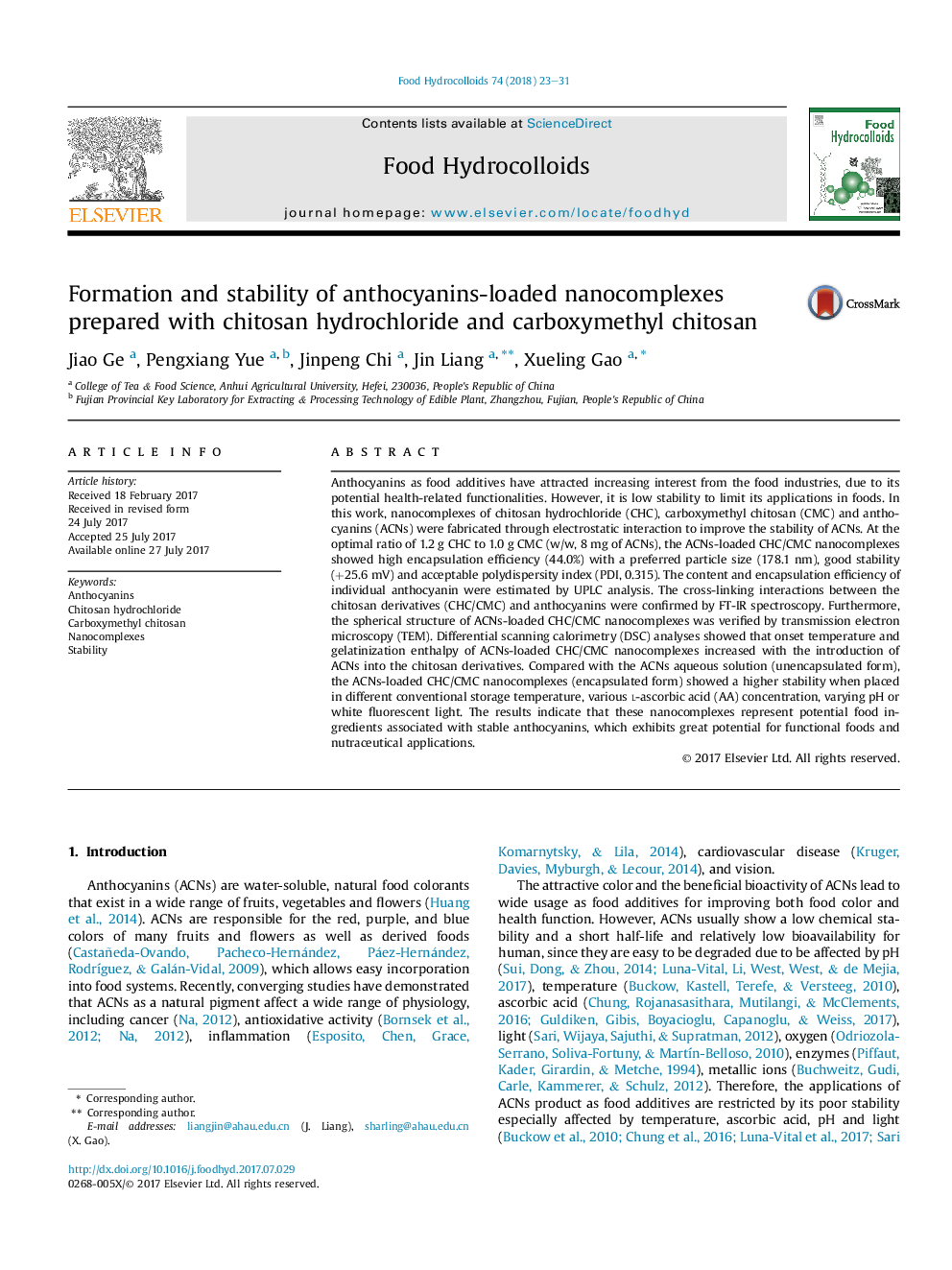| کد مقاله | کد نشریه | سال انتشار | مقاله انگلیسی | نسخه تمام متن |
|---|---|---|---|---|
| 4983719 | 1454403 | 2018 | 9 صفحه PDF | دانلود رایگان |
- Anthocyanins nanocomplexes of chitosan hydrochloride and carboxymethyl chitosan.
- Dynamic light scattering analyzes the characterization of nanocomplexes.
- FT-IR, DSC and TEM confirms the formation of nanocomplexes.
- Nanocomplexes delay anthocyanins degradation under temperature, AA, pH and light.
- The stability of nanocomplexes expand the applications in functional foods.
Anthocyanins as food additives have attracted increasing interest from the food industries, due to its potential health-related functionalities. However, it is low stability to limit its applications in foods. In this work, nanocomplexes of chitosan hydrochloride (CHC), carboxymethyl chitosan (CMC) and anthocyanins (ACNs) were fabricated through electrostatic interaction to improve the stability of ACNs. At the optimal ratio of 1.2Â g CHC to 1.0Â g CMC (w/w, 8Â mg of ACNs), the ACNs-loaded CHC/CMC nanocomplexes showed high encapsulation efficiency (44.0%) with a preferred particle size (178.1Â nm), good stability (+25.6Â mV) and acceptable polydispersity index (PDI, 0.315). The content and encapsulation efficiency of individual anthocyanin were estimated by UPLC analysis. The cross-linking interactions between the chitosan derivatives (CHC/CMC) and anthocyanins were confirmed by FT-IR spectroscopy. Furthermore, the spherical structure of ACNs-loaded CHC/CMC nanocomplexes was verified by transmission electron microscopy (TEM). Differential scanning calorimetry (DSC) analyses showed that onset temperature and gelatinization enthalpy of ACNs-loaded CHC/CMC nanocomplexes increased with the introduction of ACNs into the chitosan derivatives. Compared with the ACNs aqueous solution (unencapsulated form), the ACNs-loaded CHC/CMC nanocomplexes (encapsulated form) showed a higher stability when placed in different conventional storage temperature, various l-ascorbic acid (AA) concentration, varying pH or white fluorescent light. The results indicate that these nanocomplexes represent potential food ingredients associated with stable anthocyanins, which exhibits great potential for functional foods and nutraceutical applications.
210
Journal: Food Hydrocolloids - Volume 74, January 2018, Pages 23-31
